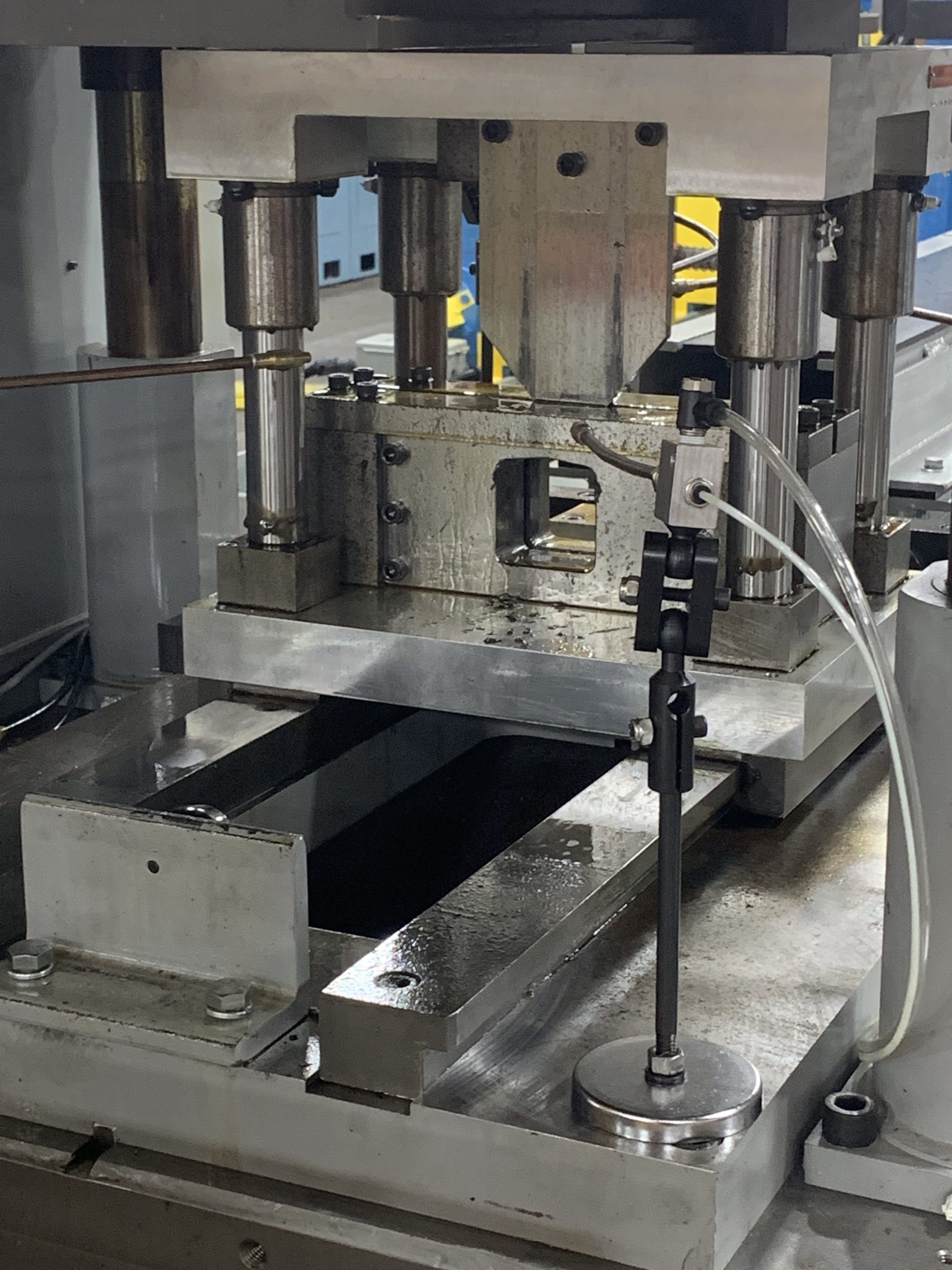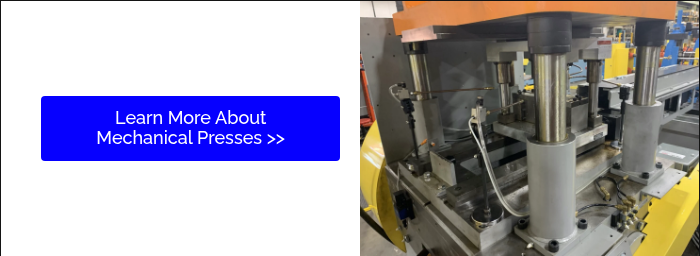In today's manufacturing landscape, the variety of presses and measuring systems available for roll forming is more extensive than ever before. There are three major types of presses that roll forming professionals should know about: mechanical, air, and hydraulic presses.
By understanding the differences between them, you can make more informed equipment decisions that enhance your roll forming system's operations and design. Each type of press has unique advantages and disadvantages, and selecting the right one requires careful consideration of your application's specific needs and constraints.
In this series on our blog, we'll go through each press type one by one and discuss their features, advantages, and disadvantages and how all those elements make them the right choice for certain applications.
Mechanical Presses - Part 3
 Benefits of Using Mechanical Presses in Roll Forming Applications
Benefits of Using Mechanical Presses in Roll Forming Applications
Mechanical presses offer significant advantages, including high precision and repeatability, ensuring consistent quality in mass production. They are also highly efficient, capable of rapid cycling, which boosts productivity while reducing production costs. Additionally, their robust design allows them to handle a wide range of materials and thicknesses, making them versatile for various manufacturing applications.
The Advantages of Mechanical Presses Include:
- High Speed: Capable of high-speed operations, making them suitable for high-volume production.
- Precision: Provides consistent and precise force, suitable for applications requiring accuracy.
- Durability: Mechanical presses are robust and can handle heavy-duty operations.
- Tool Life: Tend to have a longer tool life compared to other types of presses.
- Noise and Vibration: Generally quieter and produce less vibration than air presses.
- Best Use: Mechanicals are ideal for high SPM (strokes per minute) requirements with stationary pre-notch dies and little single stroking.
- Tonnage: Very little tonnage when more than ½ inch off bottom of stroke.

Mechanical presses in roll forming systems are valued for their high-speed, consistent stroke, which makes them ideal for high-volume production where accuracy and timing are critical, particularly in metalworking, stamping, and forming applications in various manufacturing industries, including automotive, aerospace, and metalworking. When synchronized with the roll forming line, the mechanical press cycles at high speeds to deliver precise, repeatable force at a specific point in the production process.




